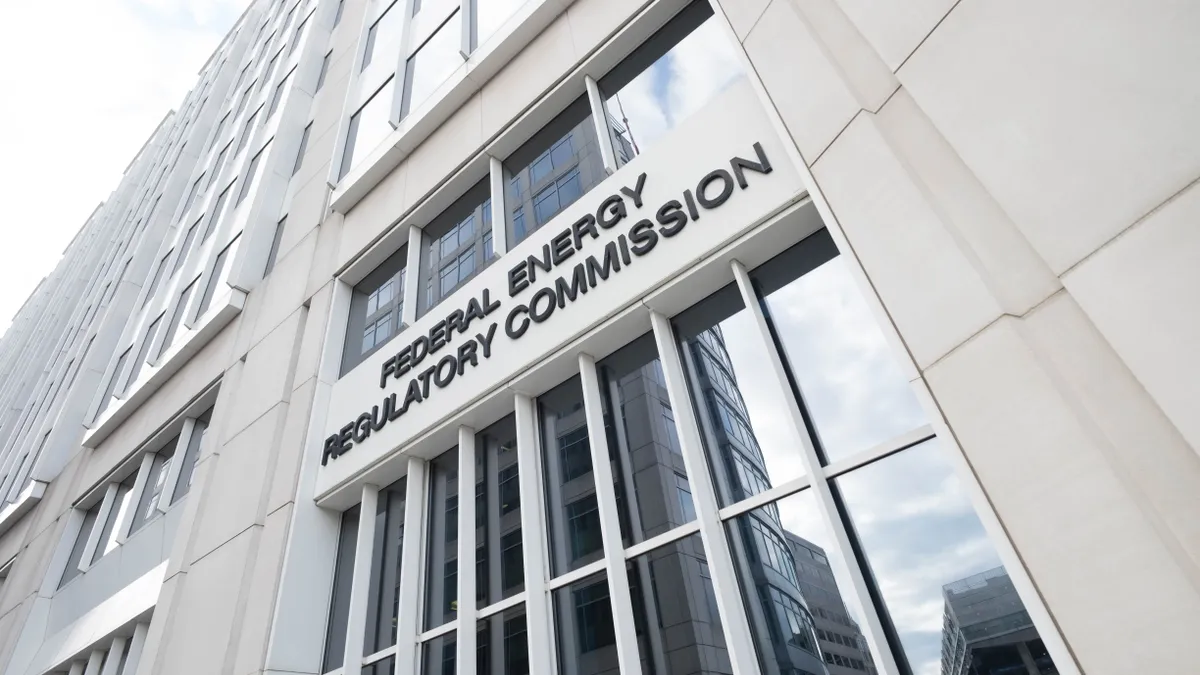Dive Brief:
- The attorneys general of California, the District of Columbia, Massachusetts, Michigan and Rhode Island are defending some of the Federal Energy Regulatory Commission's most important decisions regarding energy storage, arguing that the FERC orders in question will produce billions of dollars in health, economic and environmental benefits for their states, according to a recent filing.
- The attorneys general and the California Air Resources Board filed an amicus brief in support of FERC in a U.S. Court of Appeals for the D.C. Circuit case brought by the National Association of Regulatory Utility Commissioners, the American Public Power Association and other groups, who allege that FERC’s 2018 Order 841 overstepped the agency’s authority and imposes unfair burdens on state regulators and utilities to have to craft costly methods for energy storage to participate in wholesale electricity markets.
- In a Feb. 10 statement, the attorneys general of California and Massachusetts said that increasing the wholesale market participation of storage resources like large-scale batteries is an important component of the states’ strategies to reduce greenhouse gas emissions while also keeping energy prices in check.
Dive Insight:
Order 841 directed the regional transmission organizations (RTOs) and independent system operators (ISOs) that run the country’s wholesale electricity markets to craft new rules to allow storage resources to bid their services into the markets. Energy storage has already been quickly growing, in large part due to declines in the costs of lithium-ion batteries that can store generated electricity and deploy it at other times, and the storage industry has expected a boost from Order 841 since it will provide new revenue streams for the services storage can provide.
In their brief, the attorneys general also claim that wholesale market barriers have been holding back the growth of storage, but that Order 841 and its companion Order 841-A “provide a requirement for market design that will bolster investor confidence and encourage development of storage resources.”
Storage has the unique ability to inject energy back into the grid when it is most valuable, and thus is “essential” to state goals to reduce greenhouse gas emissions by building more renewable energy that is not available at certain times, the brief said. It cited a Massachusetts Department of Energy Resources study that found that an “optimal” amount of energy storage deployed in that state by 2020 would lead to $3.4 billion in economic, health and environmental benefits over ten years due to reduced electricity prices, reduced demand, deferred transmission infrastructure investment and a reduced need to run peaking power plants.
But NARUC and other groups mounting the challenge see FERC’s order as an infringement on state authority because it goes beyond the realm of the transmission system, of which FERC is one of the primary regulators, into the distribution system, which is typically controlled by local utilities. “A substantial, real-world burden… would be placed on distribution utilities if they were required to allow storage resources connected to their local distribution facilities or behind the retail meter… to participate in wholesale markets administered” by RTOs and ISOs, according to a brief filed by the Transmission Access Policy Study Group (TAPS), a trade association representing municipal utilities, municipal joint action agencies, electric cooperatives and an investor-owned utility.
For example, distributed storage resources, like batteries deployed at customer homes or businesses, produce two-way flows of power since batteries both deploy stored power to the grid and consume electricity from the grid. Therefore, they can lead to large costs for utilities if their distribution systems are not designed to handle those bidirectional power flows, according to the brief from TAPS. On top of those costs, the utilities would also need to develop modeling and forecasting tools to accommodate the sales of electricity from those distributed resources to the wholesale markets.
“The significant complexity—and associated cost—of acquiring and deploying modeling and forecasting tools that address these issues will be a burden on many utilities, particularly smaller distribution utilities,” TAPS argued.
TAPS and other petitioners called for FERC to give state regulators an “opt-out” mechanism where they would have the discretion to not give storage resources in certain distribution utility territories access to wholesale markets if the regulators found doing so would not be beneficial.
The brief from the attorneys general and California Air Resources Board, however, alleges that the orders are “in harmony” with FERC’s authority under the Federal Power Act. “The Orders only require that RTOs and ISOs adjust their market rules to facilitate equal participation by storage resources in wholesale markets. That directive is within [FERC’s] authority to regulate the rules and practices of the wholesale markets,” the brief said, noting that states will still be able to regulate storage in ways not related to the wholesale markets, such as “siting, safety, environmental permitting and land use.”














